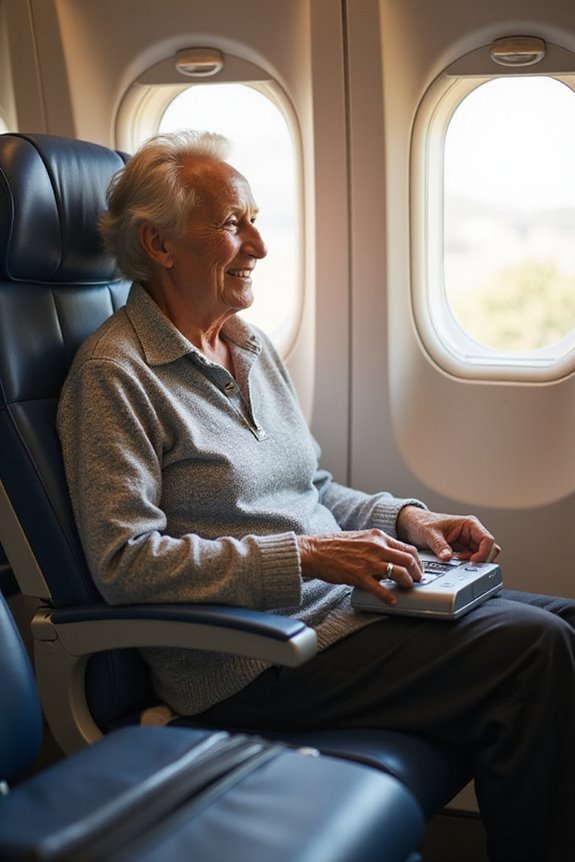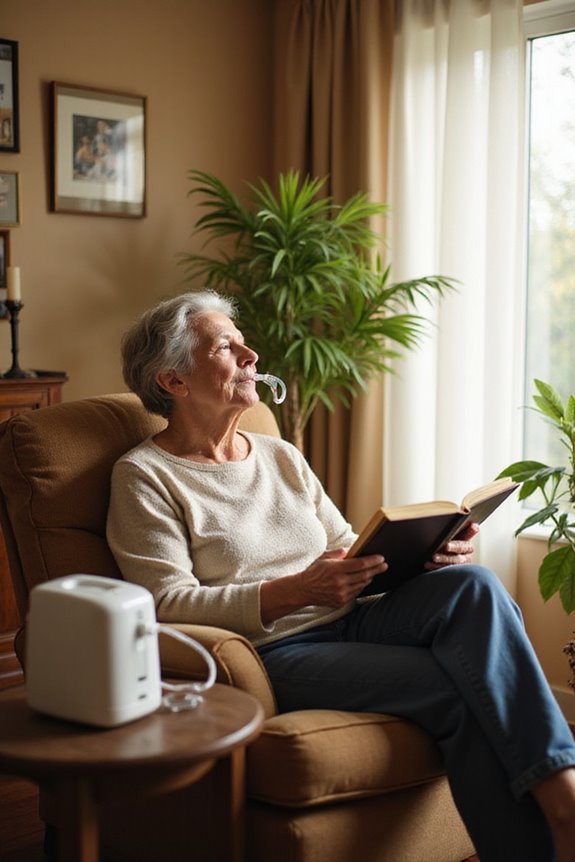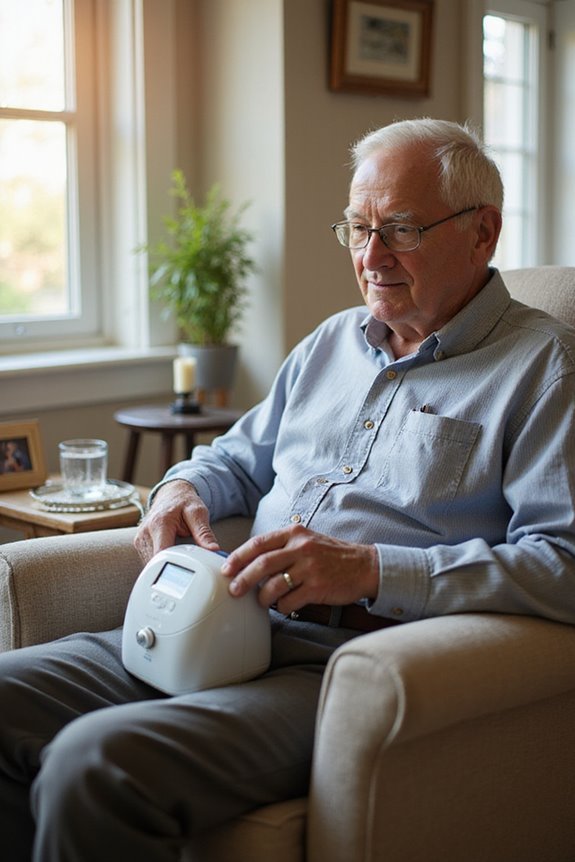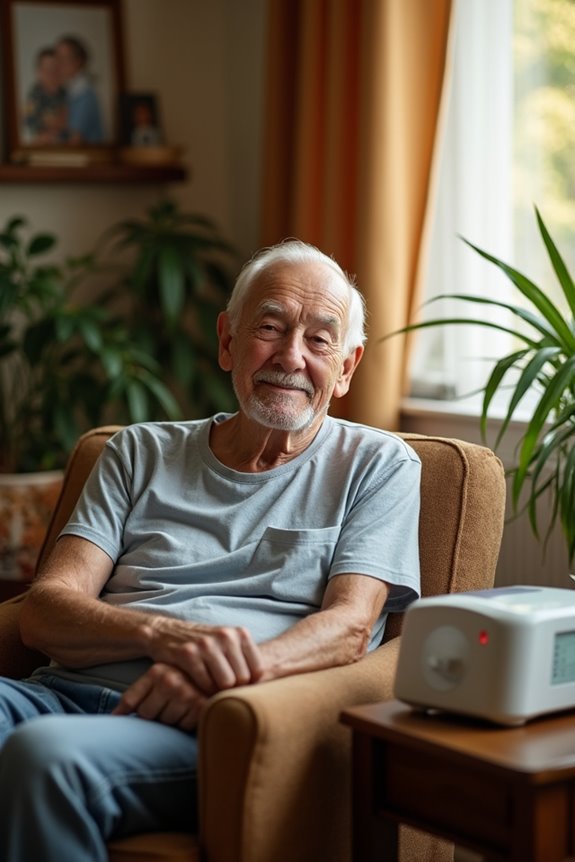Best Portable Oxygen Machines For Travel
Portable oxygen concentrators (POCs) facilitate travel for users requiring supplemental oxygen. Key models include:
- Respireasy: 1 to 7 L/min adjustable flow, 93% oxygen purity, 2.2 kg weight.
- Engen Rove 6: FAA approved, 12-hour battery life, six pulse settings.
- DEDAKJ DE-1A: Integrated nebulizer, 48-hour continuous operation.
Consider factors such as weight, battery life, noise levels, and charging options for a suitable choice. Further insights on features await.
Key Takeaways
- Look for lightweight models like the Respireasy Portable Oxygen Concentrator, weighing only 2.2 kg, making them easy to carry during travel.
- Choose FAA-approved devices like the Engen Rove 6 to ensure compliance with airline regulations and avoid travel disruptions.
- Consider battery life; models like the DEDAKJ DE-1A offer continuous operation for up to 48 hours, ideal for long trips.
- Opt for quiet units, with sound levels around 39 dBA, for comfort in social settings while traveling.
- Evaluate oxygen delivery modes; pulse and continuous flow options cater to different travel needs and oxygen requirements.
Top-Rated Portable Oxygen Concentrators for Travel
When considering portable oxygen concentrators for travel, several top-rated models stand out due to their performance and features.
- Respireasy Portable Oxygen Concentrator: Adjustable flow of 1 to 7 L/min, oxygen purity of up to 93%, and lightweight at approximately 2.2 kg.
- DEDAKJ DE-1A: Offers integrated nebulizer, remote control, and continuous operation for up to 48 hours.
- Engen Rove 6: FAA approved, with a battery life of up to 12 hours and six pulse dose settings.
- CAIRE SeQual Eclipse 5: Provides both pulse and continuous flow options, weighing 18 pounds.
- Oxlife Liberty2: Features true continuous flow up to 10 L/min, although it has higher noise levels.
User reviews and brand comparisons indicate these models consistently meet traveler needs. Additionally, the battery life of these devices ranges from 1 to 8 hours, making them suitable for extended use away from power sources.
Key Features Influencing Choice for Travel Use
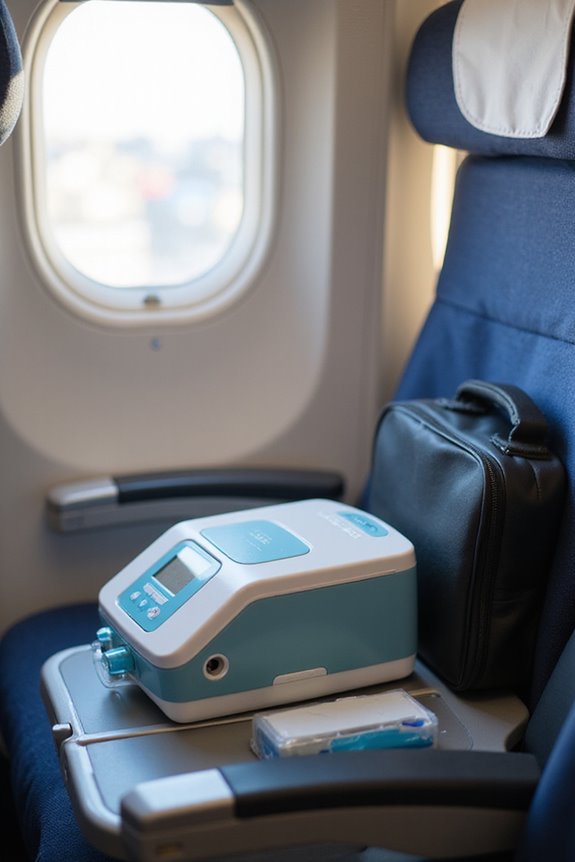
Key features influencing the choice of portable oxygen concentrators (POCs) for travel include oxygen delivery modes, size and weight considerations, altitude and environmental operation range, noise levels, and FAA compliance.
- Oxygen Delivery: Options include pulse dose, continuous flow, and combinations of both to meet varying needs.
- Size and Weight: Lightweight units (2.8 to 10 pounds) enhance portability; compact designs fit airline carry-ons.
- Altitude Compatibility: POCs should operate efficiently at high altitudes, typically up to 10,000 feet, guaranteeing functionality during flights.
- Noise Levels: Quiet operation (around 39 dBA) is essential for comfort in shared spaces.
- FAA Compliance: Devices must meet airline regulations to avoid travel disruptions. Additionally, choosing a POC with extended battery capabilities ensures uninterrupted oxygen supply during long trips.
Selecting a POC that aligns with these features guarantees safe and effective oxygen therapy while traveling.
Battery and Power Management
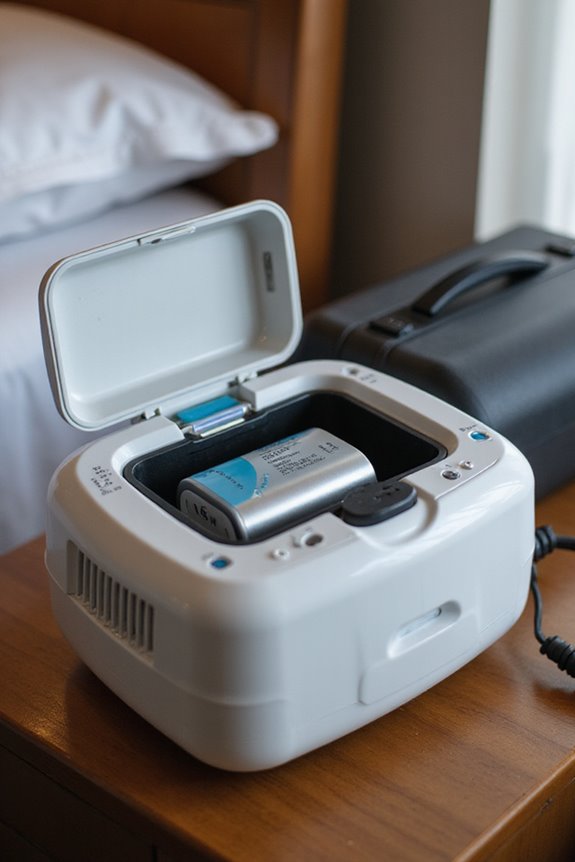
Battery and power management are critical components in the functionality and usability of portable oxygen concentrators (POCs). Key aspects include:
- Battery Capacity: Varies by model; higher cell counts yield longer usage. For instance, the CAIRE Freestyle Comfort’s 16-cell battery lasts up to 16 hours, while the Inogen One G3 provides options of 4 or 8 hours, depending on the battery size.
- Charging Options: Most POCs offer multiple charging options, including AC and DC power. Some models feature quick-swap battery packs, enabling uninterrupted use during travel.
- Power Management: Advanced systems optimize battery consumption based on oxygen flow settings, enhancing efficiency. Additionally, many models are designed with longer battery life in mind, making them ideal for travel convenience.
Understanding these factors guarantees users can select a POC that meets their duration and mobility needs effectively.
Size, Weight, and Portability Considerations
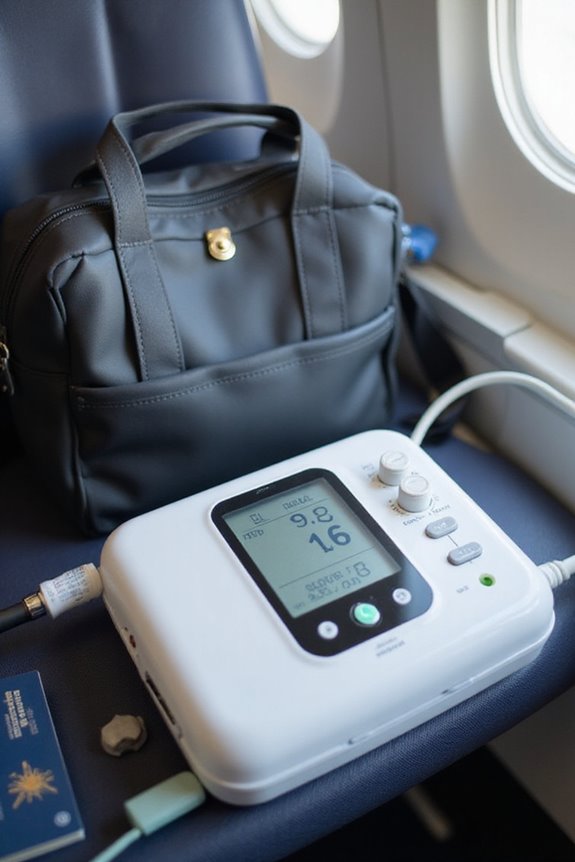
Size, weight, and portability considerations are essential factors when selecting a portable oxygen concentrator (POC).
- Weight Range: POCs typically weigh between 1.75 lbs to 16.7 lbs. The lightest option, the AirSep Focus, weighs just 1.75 lbs, while heavier models like the Oxlife Independence reach 21.5 lbs with batteries.
- Dimensions: Compact models, such as the Live Active Five, measure around 8.4″ x 3.2″ x 8.5″, promoting ease of storage and compliance with airline regulations.
- Portability Features: Many POCs feature ergonomic designs and custom carrying cases, enhancing user comfort.
- Weight Classification: Lightweight options (1.75–5 lbs) are ideal for frequent travelers, while medium (6–10 lbs) and large (10–20 lbs) units balance oxygen capacity with mobility needs. Additionally, portable oxygen devices like the SleepO2 Wrist Pulse Oximeter offer significant comfort for users during travel, ensuring they can maintain optimal health on the go.
Sound Level Impact and User Comfort
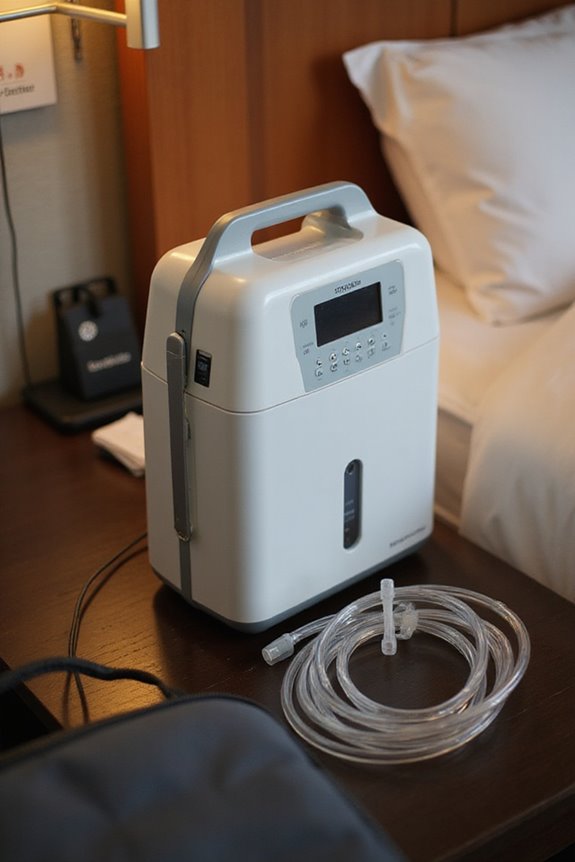
The noise sensitivity of users plays a critical role in their preferences for portable oxygen machines. Most models operate below 50 decibels, with the quietest options, such as the CAIRE FreeStyle Comfort and Inogen One G5, reaching around 39 decibels—comparable to a whisper.
In contrast, pulse flow units may emit intermittent sounds, which can be distracting in quiet environments. Lower noise levels enhance comfort in social settings like libraries or theaters, facilitating better interactions. Users with heightened noise sensitivity may prefer models with consistent low-level noise to avoid embarrassment or discomfort. Additionally, compliance with safety standards ensures that the operation remains safe and reliable, further contributing to user peace of mind.
Frequently Asked Questions
Can I Use My Portable Oxygen Concentrator While Driving?
Using a portable oxygen concentrator while driving is generally safe for medically stable individuals. Ensuring a reliable oxygen supply and understanding driving safety regulations can enhance the experience, fostering confidence and comfort on the road.
How Do I Clean My Portable Oxygen Concentrator?
Cleaning techniques for a portable oxygen concentrator involve daily wiping, weekly filter inspections, and proper disinfection. Maintenance tips emphasize using mild soaps, guaranteeing thorough drying, and following manufacturer guidelines to guarantee peak performance and longevity.
Are There Age Restrictions for Using Oxygen Concentrators?
Age restrictions for using oxygen concentrators exist, primarily guided by safety measures. Generally, individuals must be 18 years or older, while minors require explicit physician approval, reflecting essential age guidelines for responsible oxygen therapy management.
What Should I Do if My Concentrator Malfunctions During Travel?
In case of a malfunction during travel, following emergency procedures and troubleshooting tips is essential. Checking connections, verifying settings, and monitoring alerts can prevent complications, ensuring safety and peace of mind for users in transit.
Do I Need a Prescription to Buy a Portable Oxygen Concentrator?
To purchase a portable oxygen concentrator, individuals must adhere to portable oxygen regulations, which mandate prescription requirements. This guarantees proper assessment of medical needs, safeguarding patients from potential risks associated with unregulated oxygen devices.

